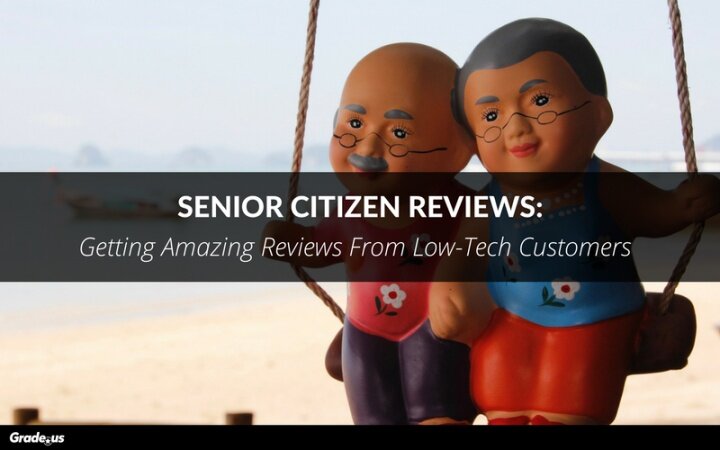- Joined
- Mar 15, 2016
- Messages
- 474
- Reaction score
- 252
Senior Citizen Reviews: Getting Amazing Reviews From Low-Tech Customers

Read the rest of Andrew's post here. He goes on to examine how seniors respond to emails, texts, and direct mail/signage.


Your customer is thrilled.
You've done an amazing job for them. They were in a rough spot but you saved the day. You're pretty sure they'd be willing to give you an amazing five-star review.
Just one problem.
Your customer is 76 years old.
They aren't all that familiar with the ins and outs of smartphones. They're on Facebook but they don't know their way around apps.
Still, their review would help you attract more like minded customers.
What do you do?
Simple, you pander to them
That sounds bad, doesn't it? Almost like I'm suggesting that you behave like a condescending jerk.
That's not what I'm suggesting.
I'm suggesting that you meet them where they are. That's important because it's so uncommon. As sellers, it's easy for us to push for what we want. It's easy for us to suggest that customers work around us.
We need to work around them.
Is it really necessary? Yes, believe it or not. When it comes to tech adoption, the Pew Research Center found seniors lag behind the general population.
Save
"Many seniors remain largely unattached from online and mobile life?41% do not use the internet at all, 53% do not have broadband access at home, and 23% do not use cell phones."
It's as if seniors are living in another world.
If you're selling to seniors and they're unfamiliar with technology, they need you to meet them where they are. If you're looking to attract more reviews from seniors it would be a good idea to go low then high. You could for example...
1. Send them a handwritten thank you card, stating that you appreciate their business.
2. Follow up by asking for a review the right way, using low tech methods they're most comfortable with.
3. Save their review, eliminating extra work on their part.
4. Give them step-by-step instructions on how to post the review you've saved.
5. Thank them again for their help and support.
It's common sense but worth repeating anyway. Regardless of your audience, your conversation should be free from condescension and contempt. A review is a privilege, not a right.
Pandering to seniors citizens attracts amazing five-star reviews
Maybe you're focused on wealthy seniors. Does that mean your audience prefers a personalized review request via phone? Or would a handwritten note strike the right balance? What if you're focused on active seniors? Should you focus on supporting or sponsoring a specific cause?
It really depends on your audience, doesn't it?
This isn't about stalking your customers, or simply hanging out on the same platforms. That idea is unproductive on its own. It's also not about manipulating customers into giving you an insincere endorsement.
It's about relationship.
Here's the problem. While 7 out of 10 people own smartphones, seniors lag far behind. Smartphone ownership has doubled in the past five years but only 42 percent of seniors (65+) own a smartphone.
What makes things even more complicated is the fact that seniors seem to prefer old school, non-digital marketing strategies. This sounds like hot air until you realize 100 million people made purchases from catalogs in 2016 alone.
That's right, print catalogs.
Offline marketing strategies like direct mail are actually making a comeback. This presents a problem. Which marketing strategy should you choose?
This secret metric has your answer
Imagine you're in the healthcare industry. You want to sell your products to as many seniors as possible. How do you make that happen?
You focus on a simple metric. Usage.
Seniors use specific brands. Their life stage present unique problems and challenges. Issues they're focused on solving. See where I'm going with this? Your customers are already going about their lives. You're using the context of existing events to form a relationship.
Smart marketers rely on relevance. They position themselves around people, events and situations that complements their goals. How do you do that? You ask two simple questions.
1. Who's using this platform, strategy or tactic?
2. Is this platform, strategy or tactic relevant (or neutral) to my offer or what my audience wants?
These two questions come with an unexpected benefit. They protect marketers from shiny object syndrome. A new social network or platform appears on the scene and marketers flock to join. Business owners and entrepreneurs feel they have to be everywhere, all the time.
It's exhausting.
These two questions keep you focused on the areas that matter most. It forces you to ask an important question.
Read the rest of Andrew's post here. He goes on to examine how seniors respond to emails, texts, and direct mail/signage.




